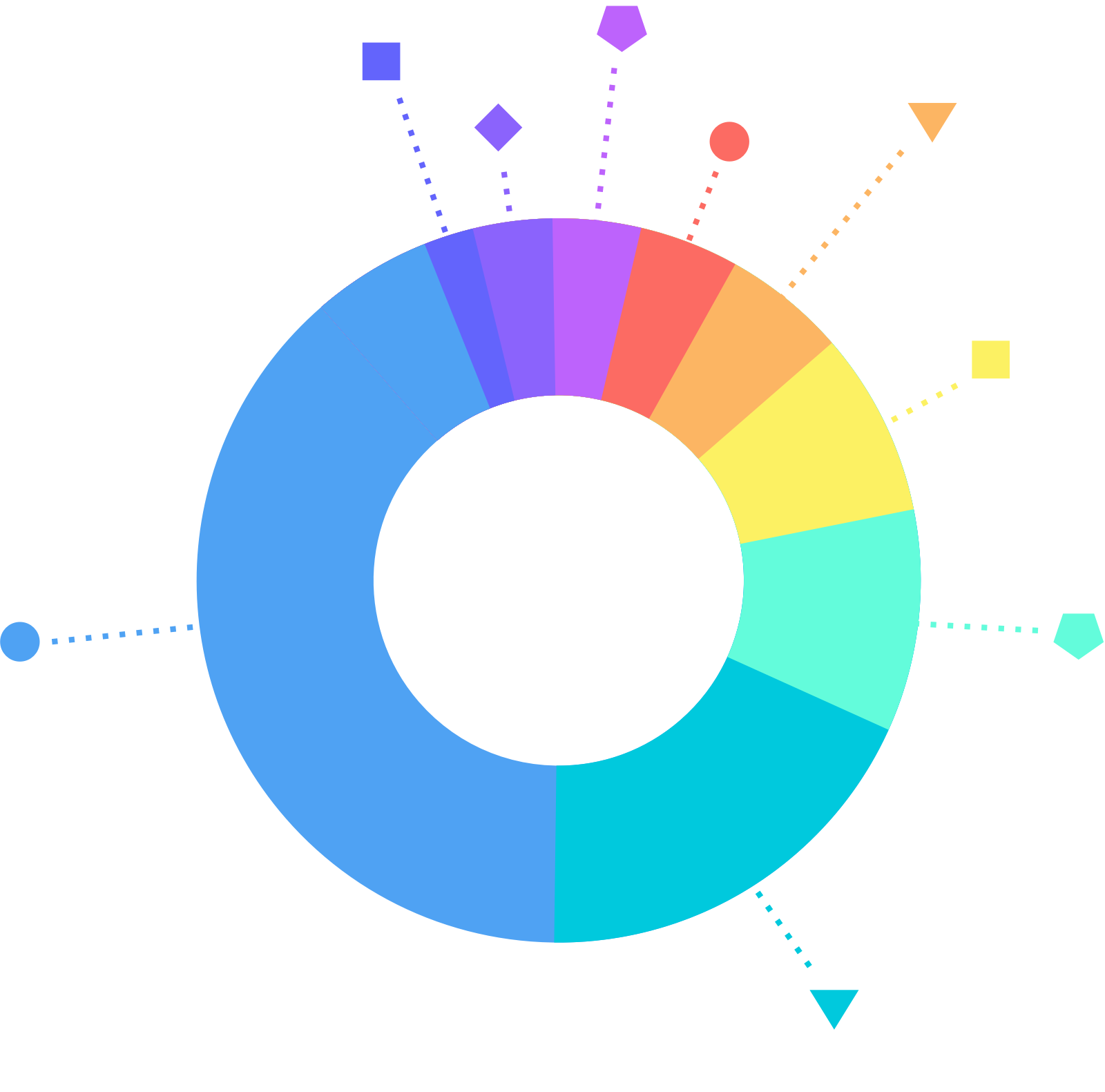Share of Everything
4 minute read
At BrandOps, we remind people that The Best Brands Win. They tip the scales in purchase decisions which leads them to category dominance. For this reason, our software measures how a brand is doing relative to the competition. The Share of Everything (SoE) model uses dozens of marketing metrics to compare and contrast brands that compete in the same category.
Historically, it’s been impractical to analyze 30 or 40 marketing metrics across a set of competitors. But today, we live in the cloud era, where artificial intelligence is used to cost effectively analyze large amounts of data in the blink of an eye. We’ve moved from it being impractical, to very practical and almost negligent to NOT use the available data. The Share of Everything model takes its inspiration from the Share of Voice model - but significantly increases the scope of data analyzed and the frequency of the analysis.
The Early Days: Share of Voice
Share of Voice (via Ads)
One of the early metrics for comparing brands was Share of Voice. As used in advertising, the analysis was done on the amount of ad spend relative to a set of competitors. It’s a rather crude way to look at things, but it essentially asked the question, “Are we outspending the competition?” Of course, this is a wonderful statistic if you’re the one selling the advertisements – but since it doesn’t include any results, it’s yields no interesting insights other than one's willingness to throw money at the market.
Share of Voice (via Social)
Although share of voice was a well-defined term in advertising, it was commandeered in the social media era. The new meaning focused on earned mentions of your brand relative to competitors. We continue to use this meaningful measure under the qualified moniker, “Share of Mentions, Social”.
Share of Everything
Organizations have moved to a digital-first model and incorporated omnichannel customer touch points. In parallel, we’ve seen the rise of external rating and review sites, new social sites, more emphasis on audio and video platforms, OTT advertising, etc. In essence, customers have a growing array of entry points and influence points as they identify and evaluate options for purchase. Although this variety might be convenient for the customers, it leaves the selling organization dealing with a splintered view of the customer and having to piece together insights. The Share of Everything paradigm overcomes the ‘singular focus’ problem we had in the past. It uses AI and cloud computing to automatically analyze data as it happens, and aggregate it so marketers have a real-time view of brand health.
Share of Earned
The Share of Earned metrics focus on how an unsolicited audience comments on a company or responds to their messaging. In most cases, the audience is a set of buyers, but it also includes other stakeholders like journalists and industry analysts. The earned feedback could be in the shape of video views or blog visits. Or, perhaps the user likes, shares, or comments on content – leaves a review or follows the company online. The point is, customers have limited time. They allocate it across some number of brands and by analyzing Share of Earned, we’re able to determine the number of people, and the level of effort that is being allocated to interact with your brand.
Notice that the metrics cross public relations, social media, customer experience, web presence, and more. Here’s a sample – but the list changes over time, and the digital channel should shift to align with where your audience is interacting with your brand.
- Share of Earned News Mentions
- Share of Earned News Mentions by Reach
- Share of Earned Podcast Listens
- Share of Earned Reviews
- Share of Earned Promoter Reviews
- Share of Earned Searches (brand name used in search query)
- Share of Earned Search Result Actions (actually clicked on)
- Share of Earned Social Mentions
- Share of Earned Social Promoter Mentions
- Share of Earned Social Followers
- Share of Earned Video Subscriptions
- Share of Earned Video Views
- Share of Earned Video Mentions
- Share of Earned Web Visits
- More…
Share of Owned
Some companies just plain out market their competition. They do it with better content, at a higher frequency, in all the right channels, targeting just the right buyer. Share of Owned isn't the marketing nirvana, but it's a great starting point. Here, the focus is on the amount of outbound communications your marketing team is making relative to the category competitors. Examples include:
- Share of Owned Outbound Emails
- Share of Owned Blog Posts
- Share of Owned Webinars
- Share of Owned Social Posts
- Share of Owned Press Releases
- Share of Owned Videos Available
- Share of Owned Podcasts
- Share of Owned Web CTA's
- Share of Owned SERP Results for Category Keywords
- More…
Share of Paid
Share of Paid is similar to the old share of voice, but breaks down the percentages by digital channel.
- Share of Paid Search Ads
- Share of Paid Display Ads
- Share of Paid Native Ads
- Share of Paid Social Ads
- More…
Outspending your competitors is an inefficient, but occasionally necessary tactic to win market share. If used, it is beneficial to track brand metrics outside of paid. For example, an increase ads directing people to a website should lead to increases in blog reads, comments, newsletter subscriptions and so on. The point being, share of paid should be considered when evaluating the share of earned results.
Putting it in Perspective
The Share of Everything (SoE) brand health model highlights a company's marketing activity via owned and paid media, incorporates customer and stakeholder engagement levels via earned mentions - and it does so in the context of a set of competitors. Unlike prior methods, the model intentionally includes many digital channels that historically were treated as silos, and the data is gathered constantly (anywhere from every 15 minutes to once a week). The model replaces old single-metric models like share of voice and is enabled by modern cloud and AI technologies. Share of Everything identifies which areas need work to ensure a brand is positioned to win.
But remember - Share of Everything metrics aren’t a holistic brand health framework. They provide fantastic insights into how you're doing relative to competition - but fall short on insights around brand perceptions, sentiment, affinity and conversion. More on this in another post!



